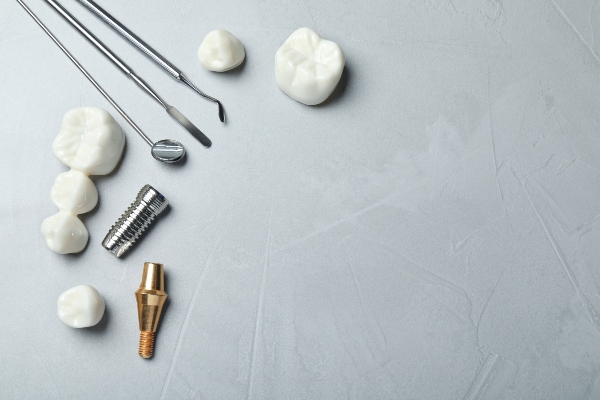What Really Happens at Your Dental Checkup (And Why It Matters!)

Most people know that dental checkups are recommended every six months to help keep your teeth clean and healthy – but do you know exactly what is going on in that chair? Understanding the process can help you feel more at ease with the work that goes into protecting your teeth.
Here’s a breakdown of what is happening at your checkup, and why it matters.
1. The Exam
Dr. Neda will examine your teeth, gums, bite, and jaw. She is checking for cavities, weakened enamel, signs of gum disease, tooth damage, early signs of oral cancer, ad issues with your bite or your jaw joint. This step is crucial for catching small issues before they become bigger, more complicated, and more costly to resolve.
2. The Cleaning
Your cleaning is tailored to your mouth’s needs, based off Dr. Neda’s findings in your exam. There are two main types of dental cleanings.
Prophylaxis (Regular Cleaning)
This is for patients with healthy gums and no active gum disease. Using specialized instruments, Dr. Neda will remove plaque (soft bacterial buildup) and calculus/tartar (hardened deposits) from above and just below the gumline. These deposits can’t be removed at home with a toothbrush or floss – professional tools and training are needed.
The main goal of prophylaxis is prevention – keeping gum tissue healthy, reducing your risk of cavities, and maintaining a fresh, clean mouth.
Periodontal Maintenance
If you’ve been treated for periodontal (gum) disease in the past, you may need periodontal maintenance instead of a standard cleaning. This is a deeper, more targeted cleaning that focuses on controlling bacteria in deeper gum pockets and preventing disease from progressing.
Dr. Neda will remove buildup from both above and below the gumline, sometimes reaching further under the gums than with a prophylaxis. The goal here is disease control and tissue preservation, helping keep your teeth and gums healthy for the long term.
3. Dental X-Rays
Dental X-rays are an essential part of your checkup that allows Dr. Neda to see what’s going on beneath the surface. This creates a complete picture of your oral health, ensuring that small issues are caught before they become big problems. There are two different types of X-rays Dr. Neda would typically perform, depending on your needs.
Bitewing X-rays
Bitewing X-rays are the most common for a routine checkup. These images are focused on specific areas of your mouth, usually in the back. Bitewings help us spot cavities, detect early signs of decay, and monitor bone levels to watch for gum disease. Most patients get bitewing X-rays once a year.
Full-Mouth Series (FMX)
A full-mouth series, or FMX, is a complete set of X-rays that capture every tooth and the surrounding bone structure. Dr. Neda will typically take an FMX every 3-5 years, when you’ve had significant dental work, or when you show signs of more complex problems. This comprehensive view helps detect hidden infections, cysts, bone loss, impacted teeth, or other structural concerns.
4. Fluoride Treatment (Optional)
Fluoride is a natural mineral that helps strengthen tooth enamel and makes it more resistant to bacteria. A quick fluoride varnish at the end of your checkup can significantly lower your risk of cavities, especially for those who are prone to tooth decay.
So now you know – your checkup isn’t just about a polish and shine. It’s a preventative health appointment for your whole mouth, which implicates the health of your whole body. By staying consistent with your visits, you’re investing in yourself for the long run.
If you’re overdue for a check-up, we don’t judge! Dr. Neda is here to help. Give Sammamish Dental Center a call at (425) 340-3113 to schedule your next dental checkup with us. We love to make you smile!
Check out what others are saying about our dental services on Yelp: Dental Checkup in Issaquah, WA.
Related Posts
Professional teeth cleaning in general dentistry is an essential part of maintaining good oral health. However, some patients are curious to know if they can cause damage to their teeth. While it is rare, understanding the possibility can be helpful.Individuals who undergo professional teeth cleanings on a regular basis may be at risk of weakening their…
As Halloween arrives, candy is on everyone's mind. While we at SDC love to indulge in sweet treats during the spooky season, it can be a fright for your teeth! We want to help you enjoy Halloween and all the candy that comes your way while protecting your oral health from too much sugar. Not…
A general dentist often recommends a dental sealant for patients who want to take extra preventative measures to ensure the health and safety of their teeth. A sealant can be utilized if they feel like your molars and other teeth with deep grooves are at risk of suffering damage. If you consider a dental sealant…
General dentistry consists of a lot of routine oral health care, which also happens to include restoring teeth that are in bad shape due to damage. Common damage may include cracks, chips, or cavities, all of which can be addressed with the help of different dental restorations. Continue reading to find out what dental restoration…


